The Bermuda Triangle is a mysterious stretch of sea that has captivated the imagination of the world for decades. Known for a series of unexplained disappearances of ships and aircraft, this enigmatic area has become synonymous with maritime mysteries and aerial anomalies.
Despite its notoriety, the Triangle does not appear on any official map, nor does the U.S. Board on Geographic Names recognize its existence, adding to the mystique and speculation surrounding it.
In this post, we’ll provide three maps of the Bermuda Triangle and will explore the history, geography, notable incidents, and theories that attempt to explain the phenomena associated with the region.
Where is the Bermuda Triangle?
The Bermuda Triangle, also known as the Devil’s Triangle, is a loosely defined region in the western part of the North Atlantic Ocean. The corners of this triangle are generally believed to be Miami (Florida, USA), Bermuda (a British Overseas Territory), and San Juan (Puerto Rico).
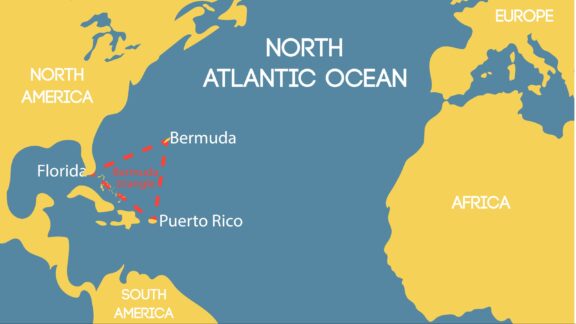
There is no specific, official definition of the region, so the triangular area covers approximately 500,000 to 1,500,000 square miles, with size and boundaries depending on the source.
Geographically, the Bermuda Triangle is situated in a heavily trafficked shipping lane, where vessels frequently pass for ports in the Americas, Europe, and the Caribbean islands. The surrounding area is a nexus of bustling maritime and air traffic, contributing to its notoriety and the numerous legends associated with it.
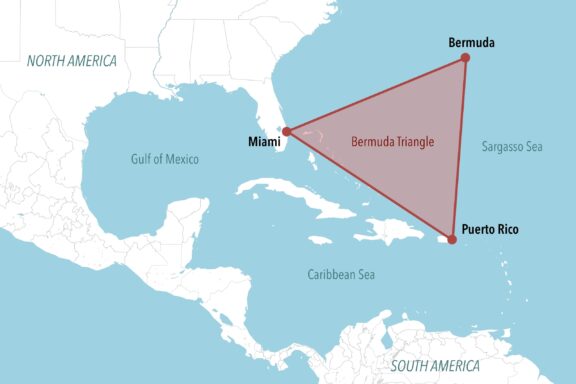
Miami, one of the triangle’s corners, is a major city and port on the southeastern coast of Florida’s Miami-Dade County. It serves as a crucial hub for international trade and tourism.
Bermuda, another corner of the triangle and a British Overseas Territory, lies to the north in the Atlantic Ocean. An archipelago of hundreds of islands, it is known for its picturesque beaches and is a popular tourist destination.
The final corner, San Juan, is the capital of Puerto Rico and one of the oldest European-founded cities in the Americas. San Juan is a significant cultural, tourist, and financial center in the Caribbean.
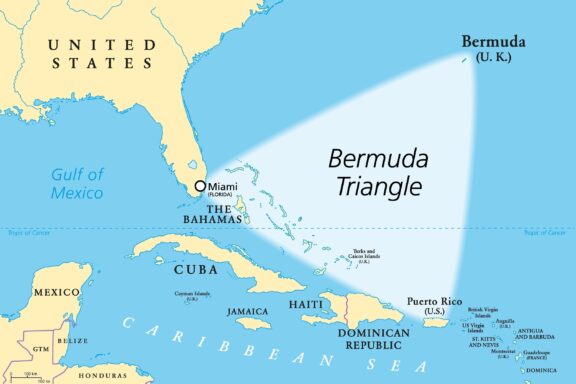
The Bermuda Triangle’s location is also characterized by the Gulf Stream. This powerful ocean current originates in the Gulf of Mexico and flows into the Atlantic near Miami. This current can cause rapid, sometimes drastic, changes in weather, which have been proposed as a factor in some of the incidents reported in the area.
History of the Bermuda Triangle
The concept of the Bermuda Triangle as a mysterious region prone to unexplained disappearances emerged in the mid-20th century, though its history can be traced back much further.
The area has been traversed by sailors for centuries, with the earliest documented voyages dating back to the era of Christopher Columbus. Reports from Columbus’s log indicate that he experienced strange compass readings near this area, which is one of the earliest recorded incidents suggesting unusual phenomena in the region.
The term “Bermuda Triangle” was first coined by Vincent Gaddis in a 1964 magazine article and later popularized through his book “Invisible Horizons: True Mysteries of the Sea” (1965). However, the region truly entered public consciousness in the early 20th century, particularly following a series of high-profile disappearances.
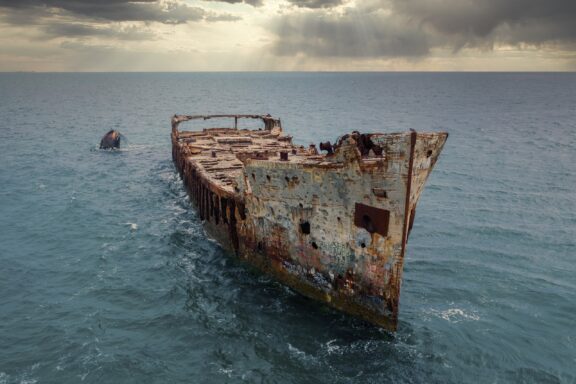
One of the most notable incidents was the loss of Flight 19 in 1945, which we’ll explore in more depth in the next section.
In the subsequent decades, multiple books and articles were published that attributed various disappearances of ships and aircraft to paranormal or extraterrestrial activities within the Triangle. These works often included sensational claims and were criticized for factual inaccuracies and a lack of scientific rigor.
Throughout its history, the Bermuda Triangle has remained a topic of interest for both researchers and the public. While some attribute disappearances to natural phenomena and navigational errors, others continue to speculate about more mysterious causes.
Despite extensive investigations, some incidents occurring within the Bermuda Triangle remain unexplained, further contributing to its mystique and the enduring intrigue surrounding this area of the Atlantic Ocean.
Mysteries of the Bermuda Triangle
Flight 19 (1945)
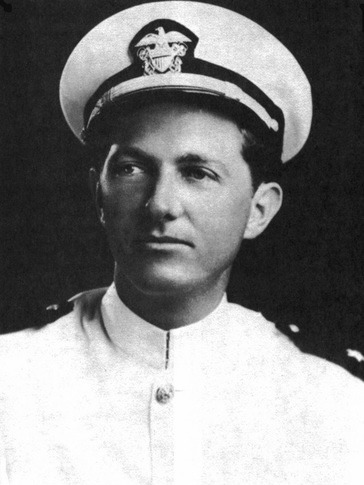
Perhaps the most famous Bermuda Triangle incident, Flight 19 involved five TBM Avenger torpedo bombers on a routine training mission. The five planes, consisting of 14 crew members, set off from Fort Lauderdale, Florida on December 5, 1945, but were never to return.
The flight, Lieutenant Charles C. Taylor, leader reportedly communicated that his compass was malfunctioning and that they were lost. Unable to find their way back to Fort Lauderdale, the planes are suspected to have eventually run out of fuel and come down in the sea.
A rescue plane with a 13-man team was sent to find the missing crew the next morning, but this plane and its men also vanished. In total, 27 crew members and their planes were lost and never found again, despite an extensive search that lasted five days and covered 300,000 square miles.
USS Cyclops (1918)
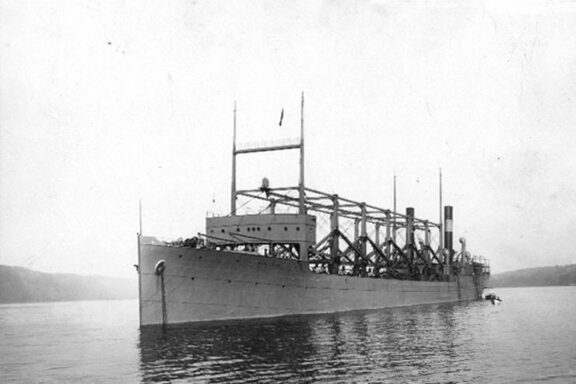
The disappearance of the USS Cyclops, a U.S. Navy cargo ship, marks one of the largest losses of life in U.S. Naval history not related to combat. The ship, carrying over 300 crew and passengers, was engaged in a standard transit of manganese ore from Brazil to the US state of Maryland through peaceful waters.
Along the journey, an unscheduled stop was made in Barbados, and the ship would never be seen again after departing for Maryland. Despite extensive searches, no trace of the ship was found, and the cause of its disappearance remains unknown.
There are several theories related to the ship’s disappearance, some of which include the Bermuda Triangle. One notable element is the testimony of an officer, Conrad A. Nervig, who was transferred off the ship in Brazil. He claimed that there were problems with both the ship and crew that could have caused subsequent problems.
Other theories include the sinking of the ship by a German U-boat or the attack of a giant squid.
Connemara IV (1955)
One of the most intriguing mysteries related to the Bermuda Triangle is that of the Connemara IV, a pleasure yacht whose crew had seemed to vanish. The yacht was found adrift south of Bermuda in 1955 in perfect condition, but its crew was nowhere to be found.
This mystery was reported in The Devil’s Triangle, a book by Richard Winer. However, this is one Bermuda Triangle mystery that appears to have been solved.
In a subsequent book, Devil’s Triangle 2, by the same author, he quoted a letter he had received stating that in fact the yacht had been anchored at Carlisle Bay in anticipation of a coming hurricane. The winds proved too strong for the moorings, and the yacht drifted out to see with no crew.
Explanations and Criticism of the Bermuda Triangle
There are several explanations for the reputation earned by the Bermuda Triangle. Some claim that paranormal circumstances are responsible, and others cite extreme natural conditions. There is also a significant amount of criticism around the idea that there’s anything strange happening in the Triangle at all.
It’s been pointed out by various critics and by government organizations that there’s little hard evidence to support any claim that anything especially unusual is happening in the Bermuda Triangle. In fact, it’s been suggested that the number of disappearances in the area isn’t significant given the enormous amount of traffic maritime and air traffic in the region.
While there may not be anything unexplainable happening in the Bermuda Triangle, it is an area that experiences extreme weather patterns and a high frequency of hurricanes. Before predictive weather systems, this was especially dangerous.
The Gulf Stream is another natural aspect of the region that may have had an impact on some of the purported mysteries of the Bermuda Triangle. The Gulf Stream is a strong ocean current that passes through the region of the Bermuda Triangle.
Acting like a river in the ocean, the Gulf Stream is capable of swiftly changing the course of ships or debris, which could contribute to some of the hard-to-explain disappearances associated with the Bermuda Triangle.
Finally, human error is another factor that could have played a role in many of the so-called mysteries that have occurred in the Bermuda Triangle. In an area with variable weather and complex magnetic fields, successfully controlling a ship or plane can be exceptionally difficult.
Image Sources and Copyright Information
- Bermuda Triangle Map: © WindVector/Shutterstock
- Bermuda Triangle Map Highlighting Miami, Bermuda, and Puerto Rico: © Dimitrios Karamitros/Shutterstock
- Bermuda Triangle Map Highlighting Region Between Florida, Bermuda, and Puerto Rico: © Peter Hermes Furian/Shutterstock
- Rusty Shipwreck in Shallow Waters: © PTZ Pictures/Shutterstock
- Portrait of a Naval Officer in Dress Whites: © NAS Fort Lauderdale/Wikimedia Commons | Public Domain Mark 1.0
- USS Cyclops in the Hudson River: © New York Navy Yard/Wikimedia Commons | Public Domain Mark 1.0